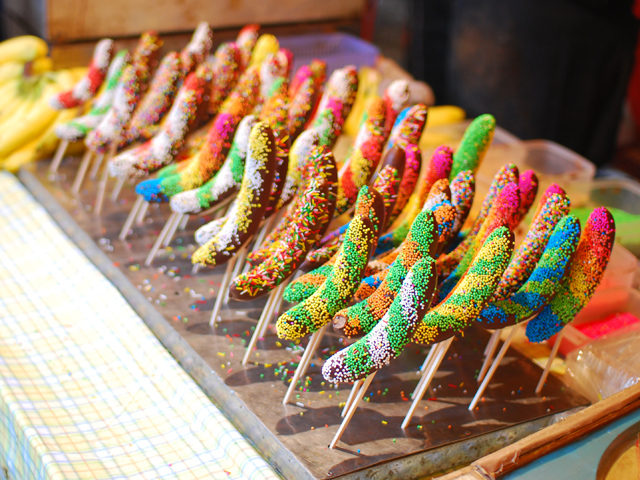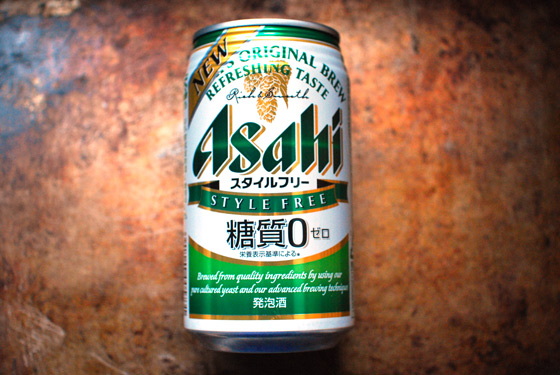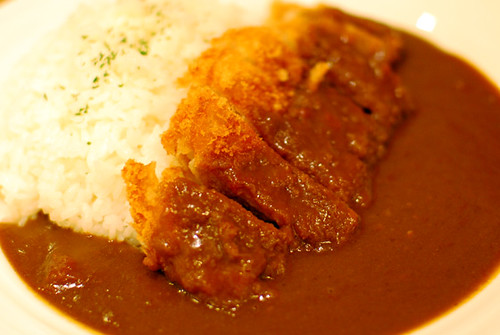I took this photo in Japan in 2010 and ever since it has been sitting in my drafts awaiting a lewd caption. Let this be an object lesson in my abject failure to craft a worthy pun.
This photo of suggestive bananas has sat in my “Drafts” for 6 years


I took this photo in Japan in 2010 and ever since it has been sitting in my drafts awaiting a lewd caption. Let this be an object lesson in my abject failure to craft a worthy pun.
I don’t understand the attraction of takoyaki. They’re balls of octopus and gluten served fresh on the streets of Japan, coated in a three types of umami: mayonnaise, bonito flakes, and their own special barbecue sauce. They turn out of their aebleskiver-like pans with a gluey consistency, a barely formed crust holding the octopus within, not quite cooked through but enough so that they are slightly rubbery. I don’t see the need to adulterate a perfectly good chance to barbecue octopus by itself. The batter seems superfluous.
Japan is mad for them. Within Tokyo, I doubt that you’re ever further than 500 metres away from the nearest chance to eat balled octopus.

It is a strange quirk of history and economics that a nation’s taxation regimes change the beer that each country drinks. In the US, beer needs to contain at least 25% malted barley and so mass market brewers push the lower limit using rice, corn or anything else that can contain sugars and is cheaper than malted barley.
In taxation terms, Japan has three kinds of beer. Japanese booze blogger Jim from MoIpai outlines:
Regular beer which must contain at least 67% malt is taxed at the highest rate.
Happoshu (which means “Sparking Spirits” 発泡酒 in Japanese) contains less than 25% malt and is therefore taxed at a lower rate (which obviously means it’s cheaper to the customers).
There is a Third-Category “beer” called 第三のビール (Daisan no Biru) which basically doesn’t have any malt and is made from “other” ingredients (I believe corn, peas, soy, etc), which has an even cheaper tax rate.
Along with attempting to juggle a fickle drinking market, Japan’s brewers do so within a three tiered tax regime. Asahi Style Free is beer of the third kind, which is to say, that it is not beer. It’s tax-dodging beer simulacra for drinkers who primarily choose their brew by price. Asahi make the claim that this beer is zero sugar which they do by some sort of prestidigitation around what counts as “sugar” in this chart. It contains no part of some subset of sugar.
The beer is as expected – yes, it’s thin and watery, headless and virtually clear, with a metallic edge and the thinness that you get from brewing with rice rather than some other grain – you can’t confuse it with an actual beer but it is surprisingly refreshing.
This limited release from Sapporo and apostrophe’d Japanese confectioner Royce’ is a strange Belgian nightmare; multiple vices backsliding into a brown can of depravity. Hops bitterness and cacao bitterness are perfect partners, malty and chocolate-y sublime and congruent combinations. Beer and chocolate works together.
But these two really don’t.
The pour is black with a quick-fading, soapy tan head. The taste is like stirring Nesquik through watered down Guinness. This would be a great place to start if you wanted to wean your kids off cola and straight onto stout. It’s sweet like candy rather than rich – the aroma of milk chocolate is there, but it doesn’t carry into anything more complex when imbibed. For a beer that weighs in at 5% alcohol by volume, the booze flavour seems to be front and centre – maybe the chocolate brings it forward?
I’m not at all against a novelty beer and Japan seems to do a good job of filling every drinking niche with unnecessarily innovative liquids. The wonderful flexibility in brewing is that if you want your beer to taste like juniper or coriander or in this case, chocolate, you can just dump it in and see what happens. The style guide can be prescriptive (if you happen to be a brewer that is driven to win awards) but the reward in any brewing should be in the drinking.
Royce’ other crossover product is chocolate coated potato chips. I’d serve them with this beer as a reminder that both ideas are an injustice to their constituent parts.
ABV: 5%
Price: Y264 from a 7-11.

Katsu kari don at Narita International Airport.
I cobbled together the last few yen on my Suica transit card and a fistful of hundred yen coins to buy the above breaded pork cutlet in sweet and acidic curry gravy, washed down with a bland as a mountain stream lager. I could have taken a parting shot at some more serious sushi or a last ball of octopus fritter at the airport lounge takoyaki bar but I didn’t.
I’m a bad food tourist. I eat Japanese food like a complete jackass.
Despite the public display of nothing but food on my photostream, the trip to Japan was more about catching up with close friends rather than having a forced and micromanaged eating experience. The only solid food plan was to visit Tsukiji and eat a sticky pancake in an all-you-can-drink setting.
When I started researching my trip to Japan, it scared the hell out of me. I’m not the best on-the-beaten-path food tourist and am at my happiest when I find food at what approaches pure randomness. I take tips on board and metastasize them into queer tumors of culinary knowledge; a lingering feeling that I should be seeking out a certain food in a certain suburb or town rather than a beeline to the top restaurant.
Chowhound has a wealth of sample itineraries for Tokyo from people who are clavicle deep in the know, but they err towards foodie accord on what constitutes the best experience; a consensual Japanese-American hallucination as to what makes capital-A authentic Tokyo dining. It is all about canonising the perfect slice of toro from Tsukiji followed by a Edo-era duck sukiyaki rather than serendipitous finds and challenging what exactly constitutes modern Japanese food.

Making a giant tray of processed mayonnaise pasta salad at the Takishimaya food hall (depachika).
Deep down, Japanese food isn’t just about respecting the seasons. It’s about eating like a goddamned fool, the liberal application of the deep fryer and barbecue, about seeking out the newest edible novelty that the world has to offer and drinking deeply from the vending machine and convenience store beer fridge. While the department store basements might be packed with regional specialties, they too hold whatever cupcake happens to be trendy and the cheap, starchy deep fried foods that Westerners tend to eat only from an employee of a funfair.
There is a whole beautiful genre of Japanese food prepared for the sole purpose of eating while getting drunk to avoid the peak hour train crush. Omoide Yokochō, an alley that runs alongside Shinjuku station is devoted to it.
The streets around the station are heavy with yakitori barbecue smoke and beer crates. In the few hours after peak hour, it was nigh on impossible to get a seat even close to a grill. Fluorescent signs illuminate the beer special and battered material of the day.
In this case, deep-fried, battered chicken skin served with a wedge of lemon and sweet processed mayonnaise.
Potato, bacon and onion fried in butter.
I’ve noticed that one of the first beers that I drink in any country is the one whose advertisement I see first. The ads for Asahi Strong Off on the subway platforms around Tokyo depicts your average businessman with an expression on his face of either drunken jubilation or gaping in a rictus of groin-tearing pain. It’s more than a little bit off.
Strong Off is a beer that promises all of the boredom of a lager combined with all of the alcohol from a stout. According to the can, it has 60% less carbohydrates which accounts for the “off” portion, the “strong” from the 7% booze kick. It’s a beer that says you remain conscious about your waistline while attempting to drink yourself unconscious.
Asahi says (via the bewildering engine of Google Translate): “Alcohol 7%, 60% carbohydrate is achieved ※ off a new genre. Malt-based company ※ “liqueur (Sparkling) ①” ratio” (アルコール分7%、糖質60%オフ※を実現した新ジャンルです。※発泡酒をベースとした当社「リキュール(発泡性)①」比)
I say: My kanji skills only extend to about 5 characters but I would not be in any way surprised if one of them on the can said “malt liquor”. This is not really even close to beer, closer to a thin alcoholic soap.